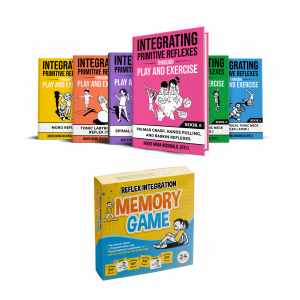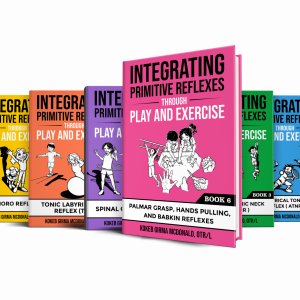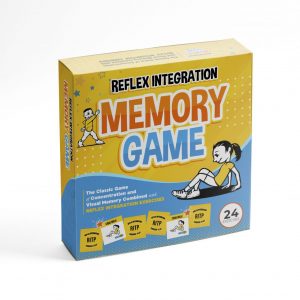Have you ever wondered why setting functional goals is so crucial in pediatric therapy? Goals shouldn’t just be a checkbox — they should directly support how a child functions in everyday life, whether that’s at home, in school, or within their community.
The Purpose Behind Functional Goals
Functional goals give therapy structure and direction. Instead of working on isolated skills, you’re anchoring every session in something meaningful. The central question becomes: How will this help the child function better in their day-to-day environment? When goals are connected to real life, progress feels more relevant — for the child and for the adults supporting them.
In This Episode: Functional Goals in Action
In this episode of the Reflex Integration through Play podcast, host Kokeb McDonald explores the importance of setting clear, functional goals in pediatric therapy. Focusing on treatment planning, Kokeb emphasizes why these goals need to connect to real-world situations — whether that’s classroom behavior, home routines, or play with peers.
You’ll learn actionable strategies like:
- Starting with screening findings
- Establishing a clear baseline
- Translating clinical observations into functional outcomes
- Involving teachers, caregivers, and other professionals in the process
Kokeb also breaks down the SMART goal framework (Specific, Measurable, Achievable, Relevant, Time-bound) and how well-crafted goals can make sessions more organized, intentional, and trackable.
Kokeb also breaks down the SMART goal framework (Specific, Measurable, Achievable, Relevant, Time-bound) and how well-crafted goals can make sessions more organized, intentional, and trackable.
4 Steps to Building Functional Goals That Matter:
- Start with Screening Results
Use initial assessments to identify behaviors or reflex patterns that need support. These findings shape the focus of your goals. - Find the Baseline
Understand the child’s current capabilities. For example, how long can they maintain posture or focus on a task? This helps you measure progress accurately. - Connect Observations to Real Life
Translate clinical insights into meaningful outcomes. If a child is working on postural control, link it to writing stamina or classroom participation. - Involve the Whole Team
Collaborate with caregivers, teachers, and others to ensure the goals reflect needs across environments and support consistency.
Crafting SMART Goals
The SMART framework is essential for creating goals that are effective and trackable.
Example: “Within 8 weeks, the child will sit upright for 10 minutes during tabletop tasks with no more than one prompt.”
- Specific: Target one defined skill
- Measurable: Use data to track change
- Achievable: Keep it realistic for the child’s ability
- Relevant: Tie it to real-life functioning
- Time-bound: Add a clear timeframe for assessment
Revisit and Revise
Goals aren’t set in stone. As therapy progresses, you might notice new baselines or discover that a goal needs to be adjusted. Regular review keeps the treatment plan dynamic and child-centered.
Functional goals are like a GPS — they guide therapy sessions with purpose and ensure everyone is heading in the same direction.
Ready to Learn More?
Check out the full episode of the Reflex Integration through Play podcast to hear Kokeb break this all down step-by-step. Whether you’re a seasoned therapist or just starting out, this episode offers practical insights you can apply right away.
Let’s create goals that go beyond the clinic — and make a real impact. 💛
🎧 Tune in now to hear Kokeb’s full breakdown — and leave with practical tools to help you show up as a more confident, focused, and effective therapist.
🎒 Have you joined our family support program yet?
If so, mark your calendar for a LIVE call where I’ll be answering all your questions!
Is your child struggling with development? You’re not alone — and there’s something you can do about it! Primitive reflexes are natural movements developed in infancy.
👉 Join our Family Support Program and learn simple, effective exercises that take just 5–10 minutes a day to support your child’s brain and body development. 📲 Sign up today at RITP.info/family.
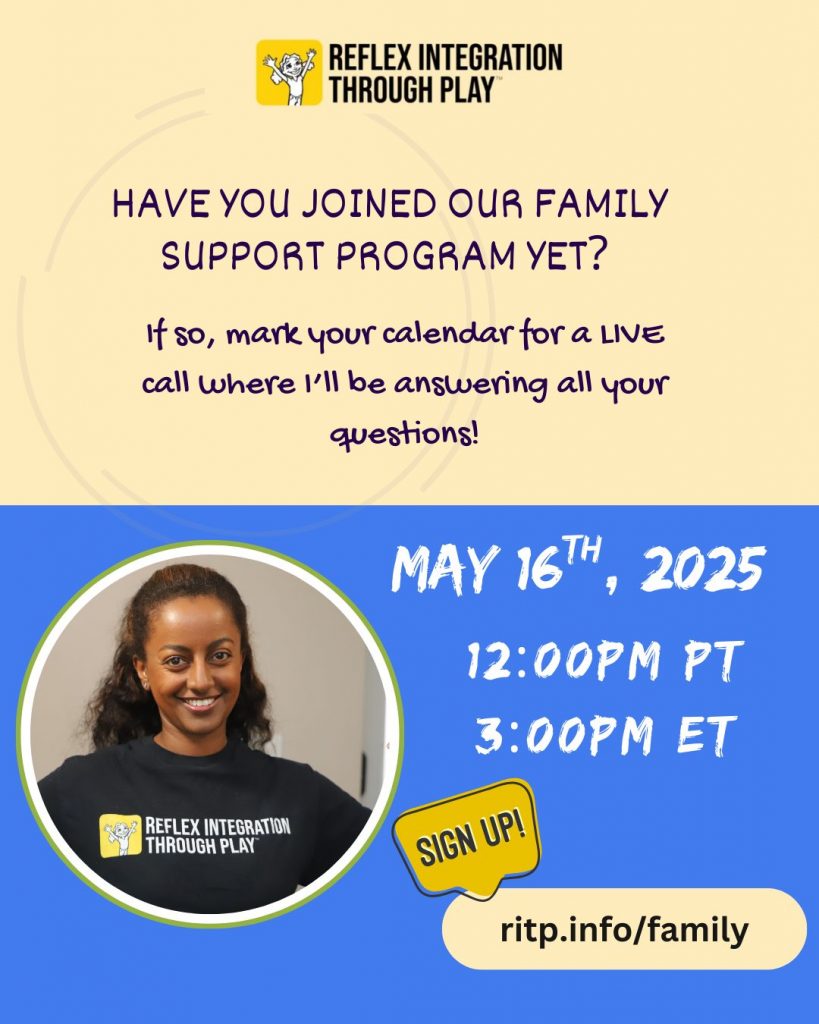
Primitive reflexes are natural movements developed in infancy. If not properly integrated, they can interfere with your child’s physical, emotional, and cognitive development.
Good news: You can help your child in just 5–10 minutes a day with simple, proven exercises.
This course will teach you how to:
✅ Identify retained reflexes
✅ Understand their impact on development
✅ Implement movement patterns that support reflex integration
Mark your calendar for May 16th, 2025 — we’re hosting a LIVE Q&A to answer all your questions!
🎒 Ready to Bring Reflex Integration Through Play (RITP) to Your School or Therapy Practice?
👉 If you’re looking for ways to bring reflex integration into the classroom, check out the Reflex Integration Through Play at School program: RITP.info/school.
RITP at School Program is designed for school-based occupational therapists, educators, professionals who want to implement a flexible, play-based, brain-body approach
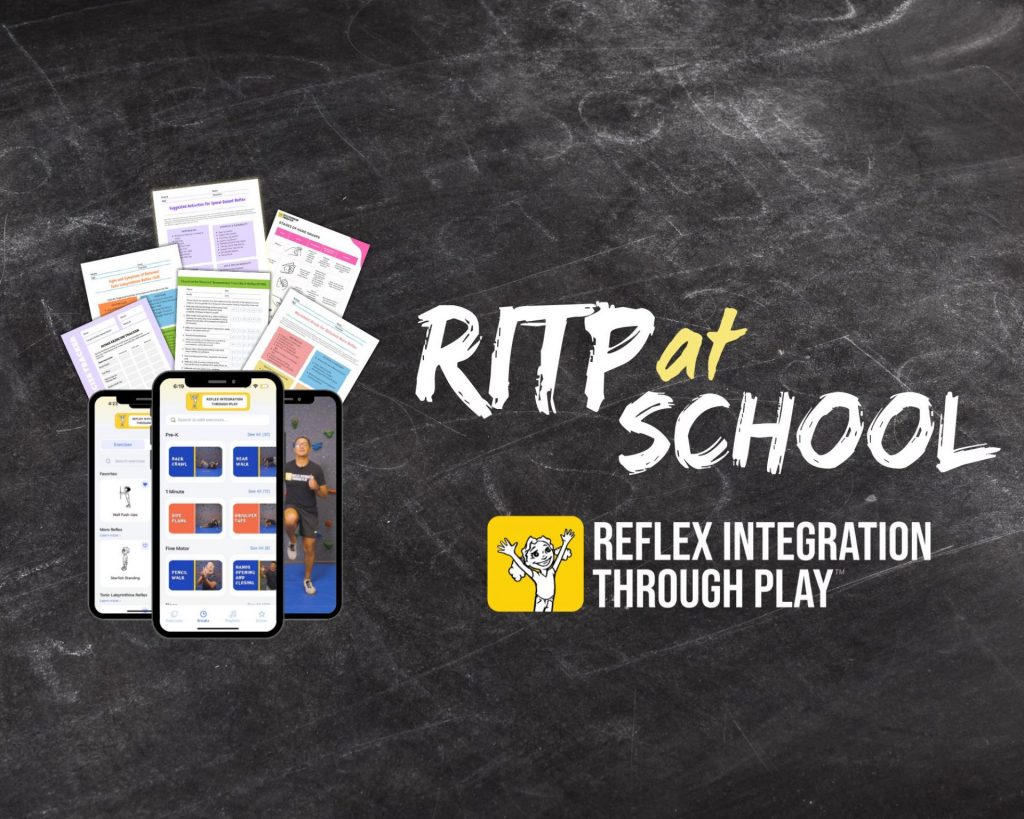
✅ AOTA-approved trainings
✅ Plug-and-play curriculum from Pre-K to High School
✅ Coaching calls to support your implementation
✅ Ready-to-use resources for both therapists and teachers
✅ Proven tools to improve focus, regulation, and learning in the classroom
Whether you’re supporting one school or many, this program gives you everything you need to equip teachers, empower students, and make a lasting impact.
🎒 Ready to Level Up Your Skills and Learn the Keys to Reflex Integration Through Play?
👉 For therapists and service providers wanting to level up their skills and bring a play-based approach to reflex integration, visit: RITP.info/certification.
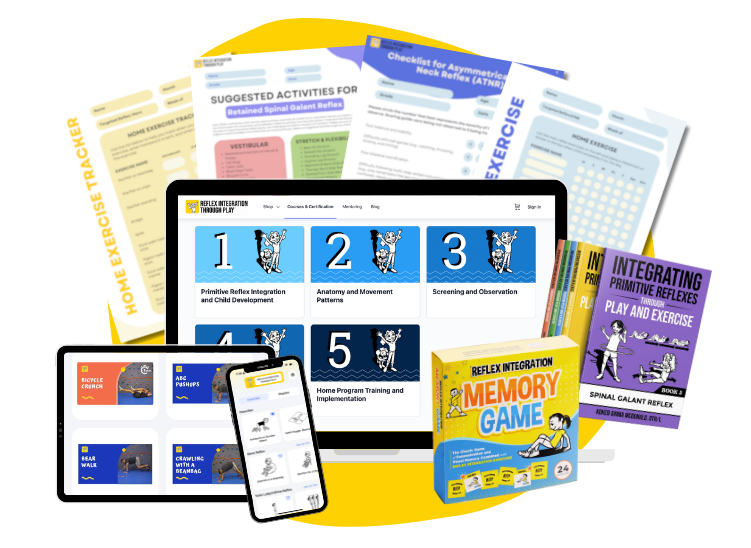
✅ Comprehensive, hands-on training to master reflex integration techniques
✅ Evidence-based methods that blend movement, play, and functional applications
✅ Step-by-step guidance to assess and address unintegrated reflexes
✅ Ongoing mentorship and coaching calls to support your clinical success
✅ Practical tools and resources to implement reflex integration with confidence
Whether you’re working with children, adults, or specialized populations, this certification gives you the skills, support, and strategies to create real, lasting change in your clients’ lives.



